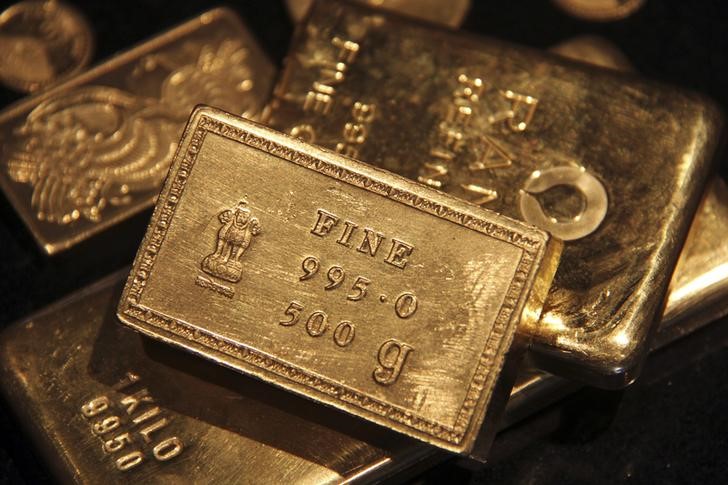Investing.com -- Barely $3 — that’s all the buffer gold had at Thursday’s lows for staying above $1,900 support as prices of the yellow metal tumbled on signs that the U.S. jobs report for June could surprise to the upside and make the Fed more hawkish.
The front-month August gold contract on New York’s Comex settled at $1,915.40 an ounce, down $11.70, or 0.6%, on the day. The session low of $1,902.72 again hovered above the three-month bottom of $1,900.60 struck a week ago.
The spot price of gold, which reflects physical trades in bullion and is more closely followed than futures by some traders, was at $1,910.47 by 15:10 ET (19:10 GMT), down $4.71, or 0.3%. The session low was $1,902.72. Spot gold had already snapped below $1,900 a week ago, hitting a three-month bottom of $1,893.01.
Fear that the Fed will bump up rates again this month grew after payroll processing firm ADP said Thursday that private employers in the United States added nearly 500,000 jobs in June. The number appeared certain to raise eyebrows among officials at the central bank who are eyeing a less dynamic jobs report from the Labor Department later this week to affirm an easing in inflation.
Wall Street’s economists on the average expect the Labor Department’s non-farm payrolls report on Friday to cite a jobs growth of around 225,000 for last month, versus May’s 339,000.
Ahead of that, ADP (NASDAQ:ADP) reported that employers outside the public sector added 497,000 positions in June, on top of the 267,000 the prior month. Craig Erlam, analyst at online trading platform OANDA, noted that gold was looking “very vulnerable” ahead of the non-farm payrolls report.
“The yellow metal is back trading just above $1,900,” said Erlam. “If it manages to hold above in the interim, a hot report could be the straw that breaks the camel's back.”
“Suddenly it will become a question of whether another hike in September is unavoidable against the backdrop of such a hot labor market. These aren't the only figures that matter but they do significantly weaken the case for another pause.”
The Fed is hoping for a softer jobs growth in June that would aid its efforts in fighting inflation. The Personal Consumption Expenditures, or PCE, Index — an inflation indicator closely followed by the Fed — grew 3.8% in the year to May. Core PCE, a component of the index stripped of volatile food and energy prices, expanded by 4.6%. The Fed’s tolerance for inflation is a mere 2% per annum.
Labor market, rate worries roil gold
The central bank has raised interest rates by 5% since the end of the coronavirus outbreak in March 2022, bringing them to a peak of 5.25% in an attempt to bring inflation back to its targeted level. The Fed skipped a rate hike in June for the first time in more than a year but is expected to resume its monetary tightening at its July 26 rate decision with another 0.5% hike.
The labor market is the juggernaut of the U.S. economy, adding hundreds of thousands of jobs a month over the past three years after initially losing 20 million to the COVID-19 pandemic.
While policy-makers the world over typically celebrate on seeing good jobs numbers, the Fed is in a different predicament. The central bank wishes to see an easing of conditions that are a little “too good” now for the economy’s own good — in this case, unemployment at more than 50-year lows and average monthly wages that have grown without stop since March 2021.
Such job security and earnings have cushioned many Americans from the worst price pressures since the 1980s and encouraged them to continue spending, further feeding inflation.
The Fed has a mandate of ensuring “maximum employment” through a jobless rate of 4% or below, and keeping inflation “manageable”. The last was a task easily achieved before the COVID-19 breakout, when prices expanded less than 2% a year. The pandemic and the trillions of dollars of relief spending by the government, however, triggered runaway inflation since mid-2021.
